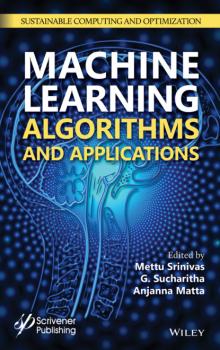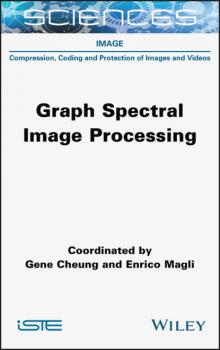John Wiley & Sons Limited
Все книги издательства John Wiley & Sons LimitedSmart Grid Telecommunications
SMART GRID TELECOMMUNICATIONS Discover the foundations and main applications of telecommunications to smart grids In Smart Grid Telecommunications, renowned researchers and authors Drs. Alberto Sendin, Javier Matanza, and Ramon Ferrús deliver a focused treatment of the fundamentals and main applications of telecommunication technologies in smart grids. Aimed at engineers and professionals who work with power systems, the book explains what smart grids are and where telecommunications are needed to solve their various challenges. Power engineers will benefit from explanations of the main concepts of telecommunications and how they are applied to the different domains of a smart grid. Telecommunication engineers will gain an understanding of smart grid applications and services and will learn from the explanations of how telecommunications need to be adapted to work with them. The authors offer a simplified vision of smart grids with rigorous coverage of the latest advances in the field, while avoiding some of the technical complexities that can hinder understanding in this area. The book offers: Discussions of why telecommunications are necessary in smart grids and the various telecommunication services and systems relevant for them An exploration of foundational telecommunication concepts ranging from system-level aspects, such as network topologies, multi-layer architectures and protocol stacks, to communications channel transmission- and reception-level aspects Examinations of telecommunication-related smart grid services and systems, including SCADA, protection and teleprotection, smart metering, substation and distribution automation, synchrophasors, distributed energy resources, electric vehicles, and microgrids A treatment of wireline and wireless telecommunication technologies, like DWDM, Ethernet, IP, MPLS, PONs, PLC, BPL, 3GPP cellular 4G and 5G technologies, Zigbee, Wi-SUN, LoRaWAN, and Sigfox, addressing their architectures, characteristics, and limitations Ideal for engineers working in power systems or telecommunications as network architects, operations managers, planners, or in regulation-related activities, Smart Grid Telecommunications is also an invaluable resource for telecommunication network and smart grid architects.
Graph Spectral Image Processing
Graph spectral image processing is the study of imaging data from a graph frequency perspective. Modern image sensors capture a wide range of visual data including high spatial resolution/high bit-depth 2D images and videos, hyperspectral images, light field images and 3D point clouds. The field of graph signal processing – extending traditional Fourier analysis tools such as transforms and wavelets to handle data on irregular graph kernels – provides new flexible computational tools to analyze and process these varied types of imaging data. Recent methods combine graph signal processing ideas with deep neural network architectures for enhanced performances, with robustness and smaller memory requirements.<br /><br />The book is divided into two parts. The first is centered on the fundamentals of graph signal processing theories, including graph filtering, graph learning and graph neural networks. The second part details several imaging applications using graph signal processing tools, including image and video compression, 3D image compression, image restoration, point cloud processing, image segmentation and image classification, as well as the use of graph neural networks for image processing.
Integration of Renewable Energy Sources with Smart Grid
This book starts with an overview of renewable energy technologies, smart grid technologies, energy storage systems, and covers the details of renewable energy integration with smart grid and the corresponding controls. This book provides better views on power scenario in developing countries. The requirement of the integration of smart grid along with the energy storage systems are deeply discussed to acknowledge the importance of sustainable development of smart city. The methodologies are made quite possible with the high-efficient power convertor topologies and intelligent control schemes. These control schemes are capable to provide better control with the help of machine intelligence techniques and artificial intelligence. The book also addresses the modern power convertor topologies and the corresponding control schemes for renewable energy integration with smart grid. The design and analysis of power converters that are used for grid integration of solar PV along with simulation and experimental results are illustrated. The protection aspects of the microgrid with power electronic configurations for wind energy systems are elucidated.
Sustainable Practices in the Textile Industry
The increasing environmental and health concerns owing to the use of large quantities of water and hazardous chemicals in conventional textile finishing processes has lead to the design and development of new dyeing strategies and technologies. Sustainable Practices in the Textile Industry comprises 13 chapters from various research areas dealing with the application of different sustainable technologies for enhancing the dyeing and comfort properties of textile materials with substantial reduction in wastewater problems. Chapters focus on the sophisticated methods for improving dye extraction and dyeing properties which will minimize the use of bioresource products. This book also brings out the innovative ways of wet chemical processing to alleviate the environmental impacts arising from this sector. This book also discusses innovations in eco-friendly methods for textile wet processes and applications of enzymes in textiles in addition to the advancements in the use of nanotechnology for wastewater remediation.









